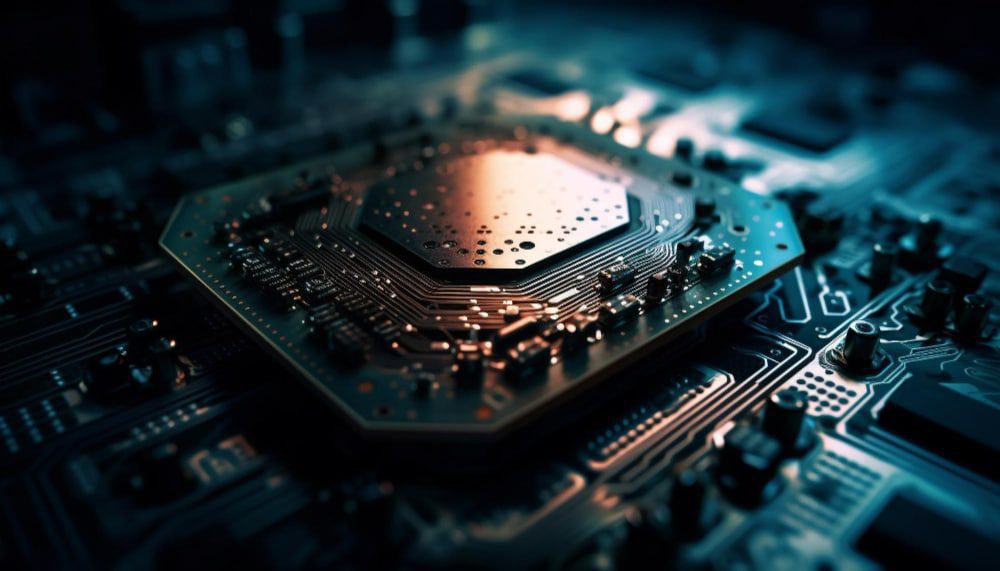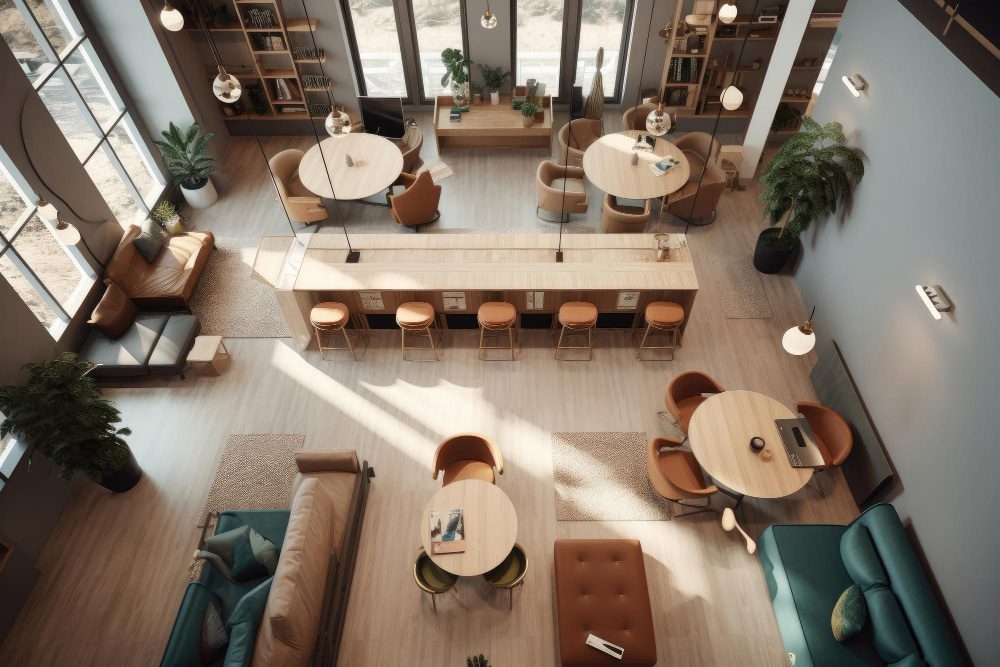Restaurant computer systems have many features that help businesses succeed. They can manage orders, inventory, payments, and customer data. But with so many options available, it can be hard for restaurant owners to choose the right system for their needs.

Overview of the importance of computer systems in restaurants
Most restaurants today rely on point-of-sale (POS) systems as their primary computer system. POS systems for restaurants are designed to make operations smoother, improve efficiency, and enhance customer service. Computer systems are crucial in restaurants because they make order management and tracking easier. With a POS system, waitstaff can enter orders into the system, which then sends the information directly to the kitchen or bar. This reduces communication errors between front-of-house and kitchen staff, ensuring that orders are prepared accurately and delivered promptly to customers.
Inventory management is important for restaurants. POS systems connect with inventory management software, so owners or managers can track ingredient levels and restock as needed. This prevents running out of supplies and ensures menu items are always available. Some POS systems also offer real-time sales data, giving owners insights into popular items and busy times. This information helps with decision making.
Overall, computer systems play an indispensable role in modern restaurants by enabling efficient order management, accurate inventory tracking, and providing valuable data insights for better decision-making processes.
Point of Sale (POS) Systems: Common software used
When it comes to Point of Sale (POS) systems for restaurants, there are several common software options that establishments tend to use. One popular choice is Toast POS, which offers a range of features such as tableside ordering, menu management, and reporting analytics. Another widely used POS software for restaurants is Square for Restaurants, known for its user-friendly interface and comprehensive functionality. It allows businesses to manage orders, track inventory, and process payments seamlessly.
Additionally, many restaurants opt for Revel Systems as their POS software provider. This system provides advanced features like ingredient-level inventory management and real-time reporting. Lightspeed Restaurant POS is another good option. It has everything you need, like order management, staff scheduling, and customer relationship management (CRM). Each software choice has its own strengths and is designed for different types of restaurants depending on what they need and like.
Hardware Requirements: Components needed for efficient operations
When it comes to the computer systems used in most restaurants, there are specific hardware requirements for efficient operations. One crucial component is a reliable and powerful processor. Restaurants typically need processors that can handle multiple tasks simultaneously without any lag or slowdown. This is because restaurant computer systems are often used for various functions such as taking orders, managing reservations, processing payments, and running point of sale (POS) software.
Another important hardware requirement is sufficient memory or RAM (Random Access Memory). Restaurant computer systems need enough memory to store and quickly access large amounts of data from different sources. This includes menu items, customer information, sales records, and inventory details. Insufficient memory could lead to slow response times, which can disrupt operations during peak hours.

In addition to a powerful processor and ample memory, restaurants also require reliable storage solutions. Hard disk drives (HDDs) or solid-state drives (SSDs) are commonly used for storing data on restaurant computer systems. These storage devices should have enough capacity to store all necessary files and databases while ensuring fast read/write speeds for smooth operations.
Overall, having the right components in place ensures that restaurant computer systems can efficiently handle the demands of day-to-day operations, ultimately contributing to seamless service delivery and customer satisfaction.
Inventory Management Systems: Streamlining stock control and ordering
Most restaurants use inventory management systems to streamline their stock control and ordering processes. Computer systems are made to help restaurant owners and managers keep track of their food and drink supplies. They make inventory management easier and more accurate. With these systems, restaurant staff can easily check how much of each ingredient they have, set points for automatic restocking, and create reports on usage and costs.
Restaurant inventory systems have easy-to-use interfaces. Staff can quickly use the system to do things like add new items, change inventory levels, or make purchase orders. These computer tools get rid of mistakes from typing and save time on administrative tasks. With an inventory system, restaurant owners can control stock and ordering better. This reduces waste, keeps stock levels right, saves money, and makes sure the right ingredients are always there for customers.
Power Up Your Business with Secure, Affordable,
and Efficient Payment Solutions
Reservation and Table Management Systems: Optimizing customer experience
Most restaurants today rely on reservation and table management systems to optimize the customer experience. These computer systems allow establishments to efficiently manage their seating arrangements, ensuring that customers are seated promptly upon arrival. By automating the reservation process, restaurants can easily track and allocate tables based on availability and customer preferences.

One common type of reservation and table management system used in many restaurants is the cloud-based solution. This system allows restaurant staff to access real-time information about reservations and table availability from anywhere with an internet connection. With this technology, customers can make online reservations conveniently, leading to a smoother dining experience.
Moreover, these systems offer additional features such as waitlist management, which enables hosts to accurately estimate wait times for walk-in guests. By streamlining the seating process, reservation and table management systems contribute significantly to optimizing customer satisfaction at restaurants.
Reporting and Analytics: Utilizing data for business improvement
In today’s data-driven world, reporting and analytics have become essential tools for business improvement across various industries, including the restaurant sector. With the rise of technology, most restaurants now rely on computer systems to streamline their operations and enhance efficiency. One widely used computer system in the restaurant industry is a point-of-sale (POS) system. This all-in-one solution not only helps with order management and payment processing but also collects valuable data on sales, inventory, customer preferences, and more.
By utilizing this wealth of data through reporting and analytics techniques, restaurants can gain valuable insights into their performance and make informed decisions to drive business growth. Reporting allows managers to generate detailed reports that provide an overview of key metrics such as sales revenue, average check size, table turnover rate, popular menu items, peak hours of operation, and much more. These reports enable restaurant owners to identify trends, patterns or areas where improvements can be made.
Advanced analytics techniques can help us understand data better by finding connections between different things or predicting future outcomes based on past patterns. For example, analytics can tell us which marketing campaigns make the most money or find ways to save money when buying things or managing the supply chain. Restaurants can use reporting and analytics tools with their computer systems, like POS systems, to make more money and make customers’ dining experiences better.
Conclusion: Summary of key points and future trends
In conclusion, it is evident that the majority of restaurants today rely on point of sale (POS) systems for their computer needs. These systems offer a range of functionalities, including order taking, payment processing, inventory management, and reporting. By using POS systems, restaurants can streamline their operations and improve efficiency.
Looking towards the future, it is predicted that the use of cloud-based POS systems will continue to rise in the restaurant industry. Cloud-based solutions offer several advantages over traditional on-premises systems, such as increased accessibility and real-time data synchronization. This trend reflects the broader shift towards cloud computing in various sectors.
Artificial intelligence (AI) is expected to become more important in restaurants. It can be used for things like automated customer service and predicting what customers will want to eat. Right now, most restaurants use point of sale systems for their computer needs. But in the future, more restaurants will use cloud-based solutions and mobile ordering. These changes have the potential to completely change how restaurants work and make customers happier.
Tagged best pos systems



